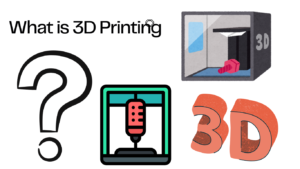Introduction to Manufacturing Engineering
Manufacturing engineering plays a vital role in modern industry by integrating science, technology, and engineering principles to improve production efficiency, quality, and cost-effectiveness.
Definition and Scope of Manufacturing Engineering
What is Manufacturing Engineering?
Manufacturing engineering is a specialized branch of engineering that focuses on designing, analyzing, and improving production processes, systems, and equipment to produce high-quality products efficiently. It involves various disciplines, including materials engineering, automation, and quality control.
Key Concepts and Applications
- Production planning and process optimization
- Advanced manufacturing techniques such as CNC machining and 3D printing
- Implementation of automation and robotics in industrial settings
- Lean manufacturing and waste reduction strategies
Importance of Manufacturing Engineering in Modern Industry
Impact on Industrial Growth
Manufacturing engineering is a driving force behind industrialization, enabling large-scale production and economic development. Innovations in this field have transformed industries such as automotive, aerospace, healthcare, and consumer electronics.
Enhancing Productivity and Efficiency
- Use of robotics and AI for automated production
- Smart manufacturing techniques for real-time process monitoring
- Integration of Industry 4.0 technologies to improve efficiency
Fundamentals of Manufacturing Engineering
Basic Principles of Manufacturing and Production Engineering
Core Concepts and Theories
Manufacturing engineering is based on scientific principles, including material behavior, thermodynamics, and mechanics. These principles help engineers design efficient production systems.
Engineering Approaches in Manufacturing
- Traditional vs. modern manufacturing methods
- Digital transformation in production processes
Evolution of Manufacturing Techniques and Technologies
Traditional vs. Modern Methods
- Manual craftsmanship and mass production techniques
- Integration of computer-aided manufacturing (CAM)
Impact of Technological Innovations
Advancements such as additive manufacturing (3D printing) and smart factories have revolutionized how products are designed and manufactured.
Role of Manufacturing Engineers in Industrial Production
Responsibilities in Product Development
- Designing efficient production workflows
- Selecting appropriate manufacturing techniques and materials
Problem-Solving in Manufacturing
- Addressing defects and improving quality control
- Implementing cost-effective production solutions
Major Branches of Manufacturing Engineering
Materials Science and Engineering in Manufacturing
Selection and Testing of Materials
Choosing the right materials ensures product durability, performance, and cost-effectiveness.
Impact on Product Performance
- Lightweight materials enhance efficiency
- High-strength materials improve safety and longevity
Process Engineering and Manufacturing Operations
Process Optimization and Improvement
Process engineers streamline production to reduce waste and enhance efficiency.
Key Techniques in Production
- Machining, casting, and molding
- Lean and Six Sigma methodologies
Industrial Automation and Robotics in Manufacturing
Integration of Smart Robotics
Robotic automation increases production speed and precision while reducing human error.
Benefits of Automated Systems
- Increased efficiency and consistency
- Reduced operational costs
Quality Control, Inspection, and Assurance in Manufacturing
Ensuring Product Reliability
Strict quality control measures ensure products meet industry standards.
Industry Standards and Compliance
Compliance with ISO and other regulatory standards ensures product safety and performance.
Key Manufacturing Processes
Casting, Molding, and Forming Techniques
Metal Casting and Plastic Molding
Processes such as die casting and injection molding are essential for producing complex shapes.
Applications in Various Industries
Used in automotive, aerospace, and consumer goods manufacturing.
Machining and Subtractive Manufacturing Processes
CNC Machining and Precision Cutting
Computer-controlled machining provides high precision in component manufacturing.
Traditional vs. Advanced Machining
While traditional machining is labor-intensive, CNC automation enhances accuracy and efficiency.
Joining, Welding, and Bonding Techniques
Different Types of Welding Processes
Includes arc welding, laser welding, and friction welding.
Applications in Industrial Manufacturing
Essential for assembling automotive and aerospace structures.
Additive Manufacturing and 3D Printing Technologies
Role in Rapid Prototyping
3D printing allows for fast design iteration and product development.
Future Potential in Mass Production
Additive manufacturing is expected to revolutionize large-scale production.
Manufacturing Systems and Advanced Production Techniques
Mass Production and High-Volume Manufacturing
Assembly Line Systems
Henry Ford’s assembly line concept has evolved into fully automated production lines.
Large-Scale Industrial Applications
Mass production is widely used in the automotive and electronics industries.
Lean Manufacturing and Waste Reduction Strategies
Principles of Lean Engineering
Eliminating waste, optimizing workflow, and reducing costs.
Efficiency and Cost-Effectiveness
Lean principles help industries increase profitability.
Role of Automation in Modern Manufacturing
CNC Machining and Computer-Controlled Production
Enhancing Precision and Speed
CNC machining ensures accuracy and repeatability in complex manufacturing.
Evolution of Computer-Aided Manufacturing
CAM software integrates with CNC machines for seamless production.
Robotics and Artificial Intelligence in Industrial Production
AI-Driven Automation Systems
AI-powered robots optimize production processes with predictive analytics.
Human-Robot Collaboration in Factories
Cobots (collaborative robots) work alongside humans to enhance productivity.
Challenges in Manufacturing Engineering
Sustainability, Eco-Friendly Production, and Green Manufacturing
Reducing Environmental Impact
Green manufacturing reduces carbon footprints and energy consumption.
Sustainable Material Usage
Using biodegradable and recyclable materials minimizes waste.
Supply Chain Management and Logistics Challenges
Addressing Global Supply Chain Disruptions
Companies are adopting resilient strategies to manage supply chain risks.
Improving Logistics and Distribution Efficiency
Smart tracking and automation enhance supply chain management.
Future Trends in Manufacturing Engineering
Sustainable Manufacturing and Green Technologies
Renewable Energy Integration
Solar and wind energy are being incorporated into manufacturing plants.
Eco-Friendly Manufacturing Practices
Sustainable techniques help industries meet environmental regulations.
Cyber-Physical Systems and Digital Manufacturing
Role of Digital Twins in Production
Virtual simulations help optimize manufacturing processes.
Industrial IoT and Smart Factory Applications
IoT-enabled devices improve monitoring and efficiency.
Applications of Manufacturing Engineering in Various Industries
Automotive Engineering and Vehicle Manufacturing
- Advanced manufacturing techniques in car production
- Robotics and automation in assembly lines
Aerospace and Defense Manufacturing Technologies
- Precision engineering in aircraft design
- High-performance materials for defense applications
Healthcare, Medical Devices, and Biomanufacturing
- 3D printing for custom prosthetics
- High-precision medical equipment manufacturing
Case Study on Advanced Manufacturing Engineering
Real-World Applications of Smart Manufacturing
Companies like Tesla and Boeing leverage automation and AI in their production processes.
Cost and Production https://nobleswift.com/what-is-control-system/Challenges
Balancing cost, quality, and innovation is a challenge for manufacturers.
Future Trends in Automobile Engineering
AI and Machine Learning in Automotive Industry
AI enhances predictive maintenance, safety, and autonomous driving capabilities.
Smart and Connected Vehicles
IoT-enabled vehicles improve navigation, diagnostics, and vehicle-to-vehicle communication.
Lightweight Materials and Aerodynamics
Advanced materials and aerodynamics help improve fuel efficiency and performance.
Sustainable and Green Technologies
Biofuels, solar-powered cars, and recycling initiatives contribute to sustainability.
Applications of Automobile Engineering
Personal and Commercial Vehicles
Everyday cars, trucks, and taxis rely on automobile engineering innovations.
Public Transportation Systems
Buses, trams, and metro systems integrate advanced automotive technology.
Motorsports and High-Performance Vehicles
Formula 1 and rally cars benefit from cutting-edge automobile engineering.
Military and Special-Purpose Vehicles
Armored vehicles, tanks, and emergency response vehicles are designed for specific applications.
Case Study on Automobile Engineering
Example of a Successful Automotive Innovation
The development of the Tesla Model S revolutionized electric vehicles with its long range and high performance.
Lessons Learned
- EV technology is the future of transportation
- Safety and efficiency go hand in hand
- Sustainable materials are crucial for future cars
For more information contact please



